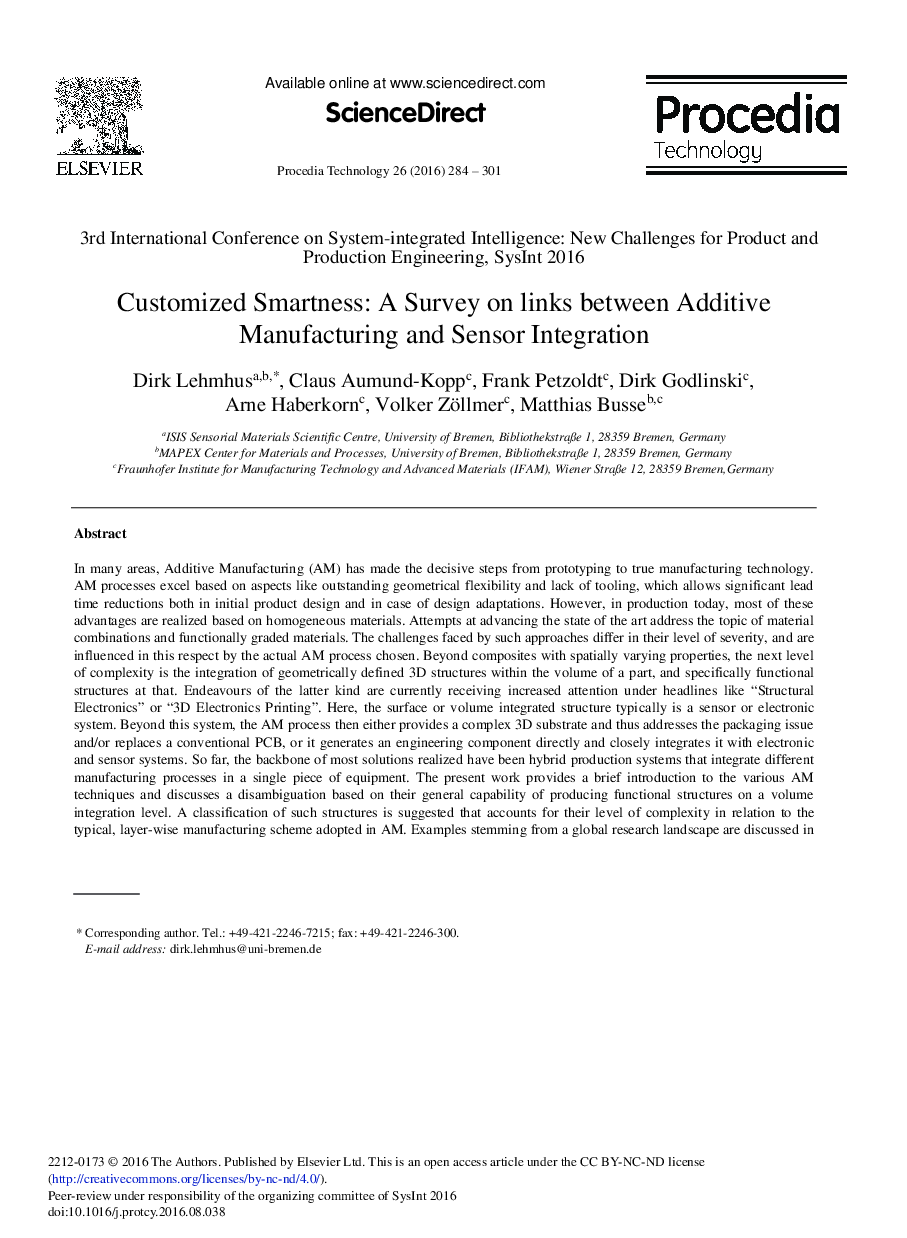| Article ID | Journal | Published Year | Pages | File Type |
|---|---|---|---|---|
| 4962462 | Procedia Technology | 2016 | 18 Pages |
In many areas, Additive Manufacturing (AM) has made the decisive steps from prototyping to true manufacturing technology. AM processes excel based on aspects like outstanding geometrical flexibility and lack of tooling, which allows significant lead time reductions both in initial product design and in case of design adaptations. However, in production today, most of these advantages are realized based on homogeneous materials. Attempts at advancing the state of the art address the topic of material combinations and functionally graded materials. The challenges faced by such approaches differ in their level of severity, and are influenced in this respect by the actual AM process chosen. Beyond composites with spatially varying properties, the next level of complexity is the integration of geometrically defined 3D structures within the volume of a part, and specifically functional structures at that. Endeavours of the latter kind are currently receiving increased attention under headlines like “Structural Electronics” or “3D Electronics Printing”. Here, the surface or volume integrated structure typically is a sensor or electronic system. Beyond this system, the AM process then either provides a complex 3D substrate and thus addresses the packaging issue and/or replaces a conventional PCB, or it generates an engineering component directly and closely integrates it with electronic and sensor systems. So far, the backbone of most solutions realized have been hybrid production systems that integrate different manufacturing processes in a single piece of equipment. The present work provides a brief introduction to the various AM techniques and discusses a disambiguation based on their general capability of producing functional structures on a volume integration level. A classification of such structures is suggested that accounts for their level of complexity in relation to the typical, layer-wise manufacturing scheme adopted in AM. Examples stemming from a global research landscape are discussed in the context of this classification. In this, two special foci are selected reflecting related activities at the Fraunhofer Institute for Manufacturing Technology and Advanced Materials (Fraunhofer IFAM): One of these is a combination of manufacturing processes, with functional printing and other direct write techniques linked to AM processes in a dedicated manufacturing cell. The other addresses integration of pre-fabricated electronic components like RFID systems into metal components produced by means of selective laser melting (SLM).The study closes with an overview of future research trends towards producing components with integrated electronics. In doing so, special emphasis is given to AM techniques that allow for in-process switching of materials and thus have the potential of realizing complex systems not by combination of processes, but within the boundaries of a single process. Also addressed are potential application scenarios that profit specifically from the combination of AM and sensor integration.
